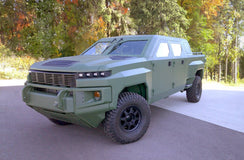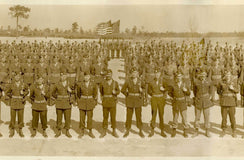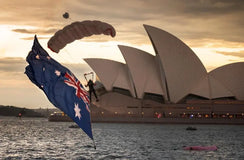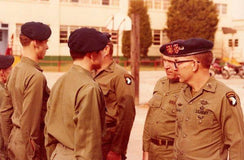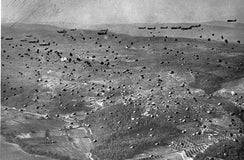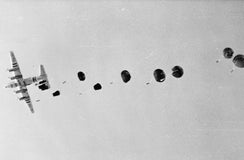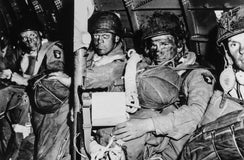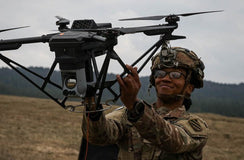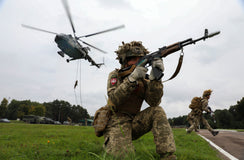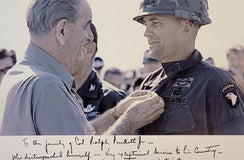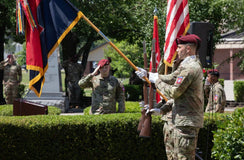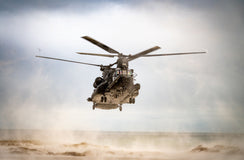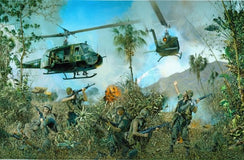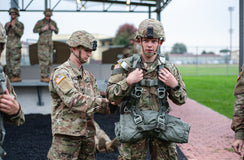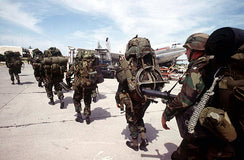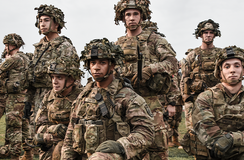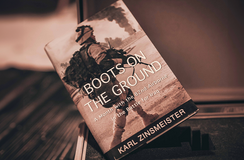The Angels Of Mercy

On 6 June 1944 the 2nd Battalion, 501st PIR was headed to on Drop Zone “D,” the southernmost Drop Zone assigned to the 101st. The Drop Zone was located just outside of the small village of Angoville Au Plain. It was here that two Geronimo Medics would become known as the “Angels of Mercy.” The 501st Paratroopers were dropped in the flooded fields occupied by the German 6th Parachute Regiment on counter-invasion maneuvers and surrounded by dense hedgerows. 20-year-old Corporal Kenneth Moore jumped from C-47 named “Round Trip” and was the last man to exit his aircraft at an estimated 300 feet. His parachute barely opened, and he soon found himself in water upon landing.
Private Robert Wright was the first 101st medic to jump into Normandy and landed about 500 meters away from Angoville. They made their way separately to reassemble in the nearby village, treating casualties along the way. They lost much of their equipment during the drop. They identified the most ideal aid station: the 12th-century church in the center of town. Soon Angoville Au Plain would be enveloped in intense small arms and mortar fire, producing more casualties. Both medics frequently scoured the fields and farmland to locate any other wounded that required treatment, relying only on their Red Cross armband to protect them from hostile action. They either assured the wounded back to the church or used a farm cart for transport the more severely wounded.
The battle for Angoville raged on for three days with the village changing hands multiple times. When the 101st was finally forced to withdraw, PVT Wright and CPL Moore elected to stay to continue their work of tending to the wounded in the church. They treated all who came through the church doors, including the German soldiers who had just attempted to repel the airborne assault. PVT Wright and CPL Moore had only one rule to receive care: weapons had to remain outside of the church.
During their three days of treating casualties as the war raged on outside its walls, Wright and Moore faced numerous challenges. They lacked critical supplies and resupply was nearly impossible.
On the afternoon of June 6th, a mortar round hit the roof of the church causing further casualties. A dud round later came through and cracked the stone floor. The round was picked up and thrown out one of the destroyed windows by Wright. At one point, the church was fired upon by a .50 caliber machine gun mounted on an American tank. Wright and Moore had to signal it to inform the patrol that it was actually an American aid station. Casualties were mounting, and their fatigue was increasing, yet Wright and Moore remained steadfast in their efforts.
At one point, two German soldiers came down from the church tower and surrendered to the two Screaming Eagles. They had unknowingly been there occupying it as an observation post since the airborne assault began and could no longer sustain themselves in hiding.
By June 8th, 1944, the fighting around Angoville-au-Plain finally ceased. Allied forces had the area secured and the push towards Paris continued. Medics Robert Wright and Kenneth Moore saved 80 lives during their time in Angoville, roughly a dozen were German. COL Robert Sink, Commander of the 506th PIR would later establish his Headquarters down the road from the church.
Friend and foe... Military and civilian... Sadly they lost three patients, including one local girl named Lucienne and two American soldiers. However, the toll could have been much higher had it not been for their heroic and selfless actions. Both PVT Wright and CPL Moore received Silver Stars for their actions during the Battle of Angoville.
Today bullet holes still scar the exterior of the church, damage from the mortar round that hit the roof is still visible and the dud impact on the floor remains. The most emotional testament to what happened there nearly 76 years ago are the bloodstains that still remain on the church pews.
The windows of the church have since been replaced with stained glass honoring these “Angels of Mercy” and the American Paratrooper. After his passing, some of Robert Wright’s ashes were also spread at the church near a marker that was erected in his honor.
The efforts of these “Angels of Mercy,” and the rest of the 101st succeeded in halting and disrupting German and prevented substantial German reinforcements from attacking forces debarking on Utah Beach, helping turn the tide of the Battle of Normandy in favor of Allied forces.
About the Author:
CPT Darren M. Cinatl, current 82nd Airborne Paratrooper assigned to 2-504 PIR, 1st Brigade Combat Team. He formerly Commanded the United States Army Jumpmaster and Pathfinder Schools while serving as the HHC Commander for the 1-507th PIR, U.S. Army Airborne School from 2017-2018. He frequently returns to Normandy and other WWII battle locations to jump historic drop zones from C-47 Skytrains, honor our veterans and preserve our history.

